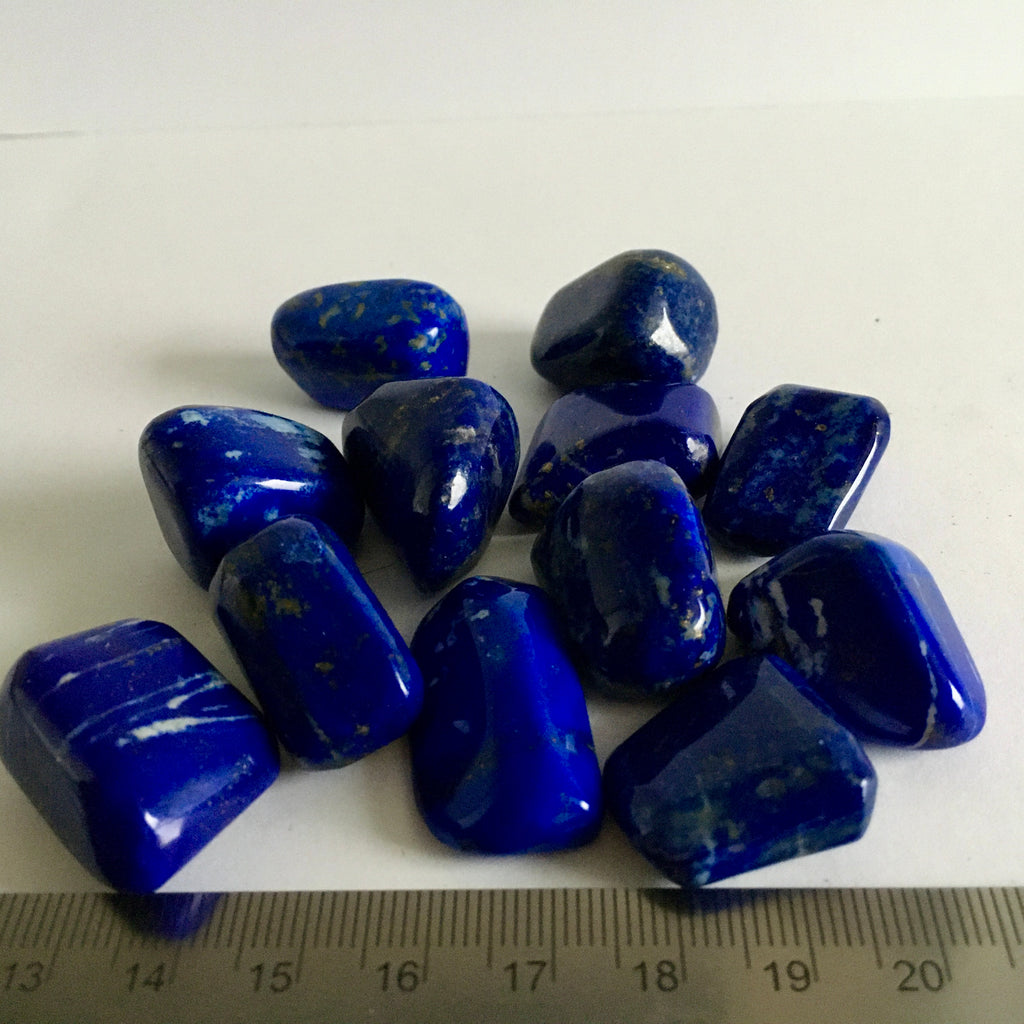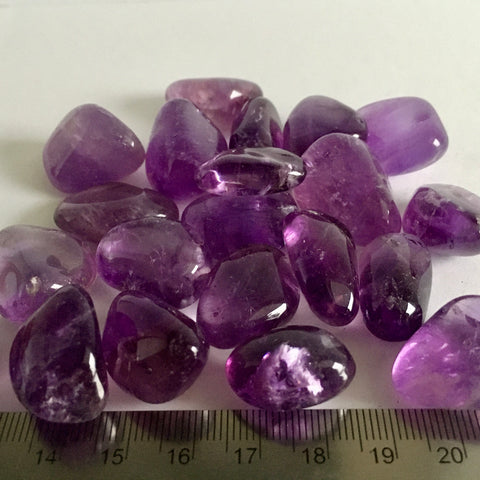
Lapis Lazuli Tumbled - 3.99
Tumbled Lapis Lazuli stones from Afghanistan - beautiful colour!
Average Size: 2 x 1.5 x 1 cm
Average Weight: 0.3 oz
Lapis Lazuli: (Naisha Ahsian and Robert Simmons) stone of inner vision; truthful communication; stone of royalty; opens third eye; balances throat chakra; enhances dream work and spiritual journeying; activates higher mind and psychic ability; possesses enormous serenity; protective stone; reveals one’s inner truth; promotes honesty, compassion, and bonding in love and friendship; powerful thought amplifier; helps one to confront truth and accept what it teaches; dissolves martyrdom, cruelty and suffering; alleviates pain, especially migraine headaches; purifies the blood, boosts the immune system and balances the thyroid gland; lapis is a third eye and throat chakra stone; it awakens one’s inner king or queen; helps to identify the karmic roots of disease and identify sabotaging patterns of thought and emotion; Affirmation: “I claim sovereignty and power of my highest self, and I align with my highest truth.”
(James Tyberon) Lapis the stone that Edgar Cayce recommended more than any other. Edgar Cayce often recommended it to individuals needing to tune into past –lives or to resolve past-life issues. Lapis Lazuli brings physical healing to the body and is used for spiritual development. This stone was prized by early civilizations more than Gold. It was used by healers to cleanse and purify the body. Lapis is able to open the chakra centres of the energetic body. Lapis opens third eye vision and enhances psychic perception and channel. Lapis promotes auric stability and provides protection. Perhaps the most important of all gems, Lapis was prized and worn by Egyptians, Greeks, Romans, Pharaohs, Czars, Priests, Popes, and Mullahs. The gold in Lapis is pyrite. Pyrite is a cube and and the structure of lapis is the octahedron. Lapis is primarily found in Chilie and Afganistan – you always want it to have pyrite in it.
HISTORICAL BACKGROUND: The sarcophagus of King Tutankhamen was richly inlaid with Lapis as well as other burial ornaments of Egyptian kings and queens. King Tutankhamen's mask was adorned with Lapis. Figurines of Lapis scarabs symbolized Pharaoh's power. The stone was widely used in pendants, protective amulets, and other jewelry, and ground into powder for dyes, eye shadow and medicinal elixirs. Queen Cleopatra wore eye makeup made from Lapis. The garments of priests and royalty were dyed with powdered Lapis. Egyptian judges carried a Lapis stone with an inscription "true", which may be where its association with truth originates from. The Romans used this stone as an aphrodisiac. Ancient Hebrews used Lapis to adorn their ceremonial robes. Buddhists recommend Lapis as a stone to bring inner peace and freedom from negative thought, and many malas are made from Lapis Lazuli. The name of the stone originates from ancient Persian, and roughly translates to 'blue stone'.
The highest quality Lapis Lazuli comes from Afghanistan where it has been mined for more than 6000 years, but is also found in Siberia, Chile, the U.S., Pakistan, and Canada.
A STONE FOR PROTECTION: Lapis is said to have the power to protect against psychic attacks; returning any negative vibrations to their source. In the Islamic culture it is a favorite gemstone for protecting against "the evil eye". Lapis is a high vibrational stone, and thus will not allow lower vibrations to enter. Perhaps another reason why the royalty favored this stone.




